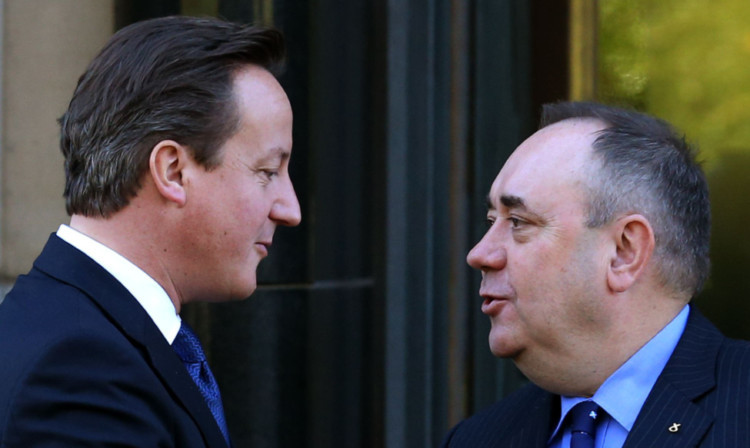The campaign against Scottish independence must move beyond economics to arguments of the “head and heart”, Prime Minister David Cameron has said.
The UK offers security in a “dangerous world”, according to Mr Cameron, who said he will “work very hard to play my part” in the referendum.
However, Number 10 has confirmed the Prime Minister will not take part in a public debate with First Minister Alex Salmond, following a new SNP poll indicating a substantial proportion of the British people would like to see them go head-to-head on television.
Speaking to the Sunday Times Mr Cameron said: “We’ve just got to keep pushing both the arguments of the head and those of the heart. I think the arguments of the head we’ve been winning very strongly. We now need to win some of the arguments of the heart.
“The UK is not something to want to belong to simply for economic reasons, but actually for emotional and historic reasons.”
He added: “In a diverse, dangerous world, the security of the United Kingdom; the ability to be part of something that could be a great success story, just as it has been in the past we need to win those arguments.
He continued: “Obviously I’m very concerned that we win this referendum. I think the argument has been going the way of the United Kingdom, but it will not be won until every last vote is counted.
“I’ll work very hard to play my part.”
Mr Cameron has come under renewed pressure for a televised debate with Mr Salmond following his New Year message urging England, Wales and Northern Ireland to send a message to Scotland that “we want you to stay”.
Mr Cameron has steadfastly refused Mr Salmond’s challenge, insisting the debate should be amongst the people of Scotland.
But in a new letter to Number 10, Mr Salmond told the Prime Minister that his New Year plea to Scotland undermined this argument.
Mr Salmond said: “I note that you used the centre-piece of your New Year address to attack Scottish independence. It seems that you want to dictate the terms of the debate about Scotland’s future without taking the democratic responsibility to defend your views in open debate. That is simply unacceptable.”
A spokesman for Yes Scotland said: “A televised debate with the First Minister and Prime Minister will help Scots choose between the two futures on offer and ensure that the UK Government fully explains why it is willing to implement unwanted policies north of the border.”
Mr Salmond described Mr Cameron’s position as “increasingly ridiculous”, and insisted the Prime Minister will be “dragged into the television studio” eventually.
“David Cameron’s attitude is the same mix of arrogance and fear that saw the Tories seek invisible cuts to Scotland’s budget in the 1980s and plan £4 billion of cuts for the future,” he said.
“Arrogance because his government wants to dictate the terms of the debate but refuses to take part in a public debate because he knows, as people across Scotland do, that he represents a government Scotland did not elect.”
